- Home
- Jeffery Deaver
The Cutting Edge Page 6
The Cutting Edge Read online
Page 6
This lack of insight was true too of those in the stores and restaurants along 47th Street and nearby. “Nobody’s talking to me, Lincoln,” the young officer had said. “It’s like they’re afraid to be seen helping. As if the unsub is nearby, taking notes.”
“Keep at it, Rookie,” Rhyme said and hung up. He wasn’t enamored of witnesses in any event—their testimony, he felt, was aggressively unreliable—and was hoping mostly that someone might point Pulaski in the direction of evidence that the fleeing perp had discarded or accidentally shed.
He looked over the four-by-three-foot erasable whiteboard on which Sachs and Cooper were recording their results.
They knew a few things from the anonymous call (assuming it was accurate): The perp was probably white, male, his face obscured by a black cloth ski mask. He wore gloves and was armed. Average height. Another call had been made to 911, reporting that the killer had carried a black briefcase. It hadn’t been found at the scene, so he would have it with him possibly, unless he’d ditched it.
Sachs believed that the caller was the employee or associate of Patel’s who’d walked into the crime and been shot, VL. A canvass of the Port Authority, where he’d made the most recent phone call, had revealed no sightings of anyone injured. Rhyme had wanted someone to remove the coins from the pay phones from which the man had made the call and fingerprint them.
“You don’t need a quarter to call nine one one,” Sellitto had said, amused. “The city got that worked out in the budget.” Hospitals had been alerted to report anyone injured by what would be rock splinters but the odds that the roughly one thousand emergency room doctors in the New York area would learn of this request and follow through, if they did, were pretty damn slim.
Sachs had called the company that owned the diamonds, Grace-Cabot in Cape Town, South Africa. It was hours later there, early morning, and she’d left a message. There was, after all, a possibility that the stones had been shipped back or were elsewhere, perhaps contracted out to other diamond cutters who worked with Patel.
If that was true the case would become even more confounding, and it would be up to the high-value evidence technicians to run an inventory and learn if anything was in fact missing.
As for physical evidence, there’d been hundreds of friction ridge images—fingerprints—discovered: the shop, the elevator, the handles of the doors to the street, the doors to the stairwell, the railings in the stairwells. But none were in the IAFIS database. He hadn’t expected any hits; the number of cloth glove prints suggested Unsub 47 never took them off.
Don’t make it easy for us, do they? A rhetorical query that Rhyme didn’t bother to express aloud.
Some crimes—sexual in nature and physical fights, for instance—are usually DNA-rich exchanges, and the deoxyribonucleic acid database—CODIS, in America—might reveal an identity in such instances. But a crime like this, by a gloved killer, wearing a long-sleeve outer garment and slacks—as well as the ski mask—would offer little chance for him to leave behind DNA.
Some cloth fibers had been found, none of which matched the clothing worn by the victims. Some were black cotton, most likely from gloves—since they were found on doorknobs and drawers. Also, Sachs had discovered black polyester fibers, which were probably from the ski mask.
No empty cartridge shells from the gunshot; he’d taken the brass with him.
“What do we have there?” Rhyme asked his lab man impatiently. His eyes on the electrostatic footprints from Jatin Patel’s shop, now scanned and slapped onto a high-def screen.
Mel Cooper was wearing a white lab coat, cap and gloves, as well as a face mask. And his ever-present Harry Potter glasses. “Hard to say for certain but our boy’s between a ten and an eleven and a half.” Since shoe toes curl upward and heel size varies, it’s sometimes difficult to ascertain an exact size. “And some distinctive wear marks but there’s no tread.”
“So businessman footwear.”
“Right.” Much better if the perps wear running shoes. The distinctive tread marks will usually give you brand and model number, and sometimes even color can be ascertained from the model.
“Any small lines in the blood, next to the shoe prints?” Rhyme was looking at an image shot by Sachs on her Sony digital camera.
“Lines?” Cooper asked.
“Wormy lines, squiggly lines,” Rhyme muttered. “I can’t tell.” When he noted that both Sellitto and Cooper were glancing his way, perplexed, he started to speak but Sachs, hunched over an examination table, said, “From dangling shoelaces. They might not show up in the electrostatics but they would in the blood.”
Rhyme smiled. He loved her.
“Ah.” Cooper examined the footprint photos. Sellitto looked once, then checked texts.
“Ah, bored, are we, Lon? Many a case’s been closed because of something as trivial as finding out if the perp wears shoes with laces or not.”
“Hey, Linc, you’re the squiggly line/bloody shoe-print guru. Not me.” He took another phone call and stepped away.
No squiggles, it turned out. Probably slip-ons.
The witness had reported only one perp present, and footprints confirmed the killer was by himself.
His weapon was most likely a 9mm Glock, like Sachs’s, to judge from the polygonal rifling of the slug. Gun barrels for the past 150 years have contained interior indentations to spin the bullet as it leaves the weapon, making it more accurate. Most have lands and grooves—troughs. Glocks, however, have wavy indentations, not sharp edges, which give the bullet more speed and power. They aren’t the only guns with this feature—others are Heckler & Koch, Kahr Arms, Magnum Research, Tanfoglio, and CZ—but Glocks are by far the most common to feature polygonal rifling.
Sellitto disconnected his phone. “That was a couple gold shields. Went to Patel’s sister’s house, delivered the news. His wife had passed away a few years ago and the sister’s the only family he’s got in the area. They said it was pretty tough for her. She nearly collapsed. They waited till her husband got home to ask her questions. She said she didn’t know much about the business. That was a ‘man thing,’ she said.
“Patel’d never told her or her husband that he was concerned about security or that anybody’d been casing the shop. But he was really famous as a cutter—here and internationally too. Word could’ve gotten around that he had some nice shit for somebody to steal. My word, not hers.”
Sachs asked, “Partners? Employees? She have any idea who that witness was?”
“She didn’t really know. He owned the place himself. No full-time employees—he was too cheap and didn’t trust anybody else to work on the stones. Except, his sister thought, some young man worked there occasionally, apprenticing to be a diamond cutter. They asked about S and VL. But zip.”
Sachs said, “Probably paid in cash, off the books, to save money; no payroll information to help us track him down.”
A team from Crime Scene in Queens had searched Patel’s modest apartment on the Upper West Side of Manhattan, where he’d lived alone since his wife passed away of cancer some years ago. There was no evidence of a break-in, and—as Rhyme had wondered—the Grace-Cabot diamonds were not there.
Neither was Patel’s phone, so their contact at the NYPD Computer Crimes Unit was presently getting a list of numbers, incoming and outgoing, from the provider. They hoped one of these would prove to be a call to or from S or VL.
Sachs stepped away to take a call and, nodding absently as she had a conversation, jotted a few notes. Then gave the caller her email address.
A moment later a computer sounded with an incoming message and she disconnected and called it up.
“Movie time,” she said. “Security company for the building. This’s the security video of the floor this morning.” She downloaded it and began playing the grainy black-and-white footage.
Rhyme wheeled closer. Patel had arrived for work at about eight thirty this morning. Nothing happened until a few minutes before eleven. A man appeared, be
arded and in a black overcoat and a short-brimmed hat, possibly with short dark hair. He pushed a button on the intercom of Patel’s shop, was admitted and stayed about twenty minutes.
“Probably S—Patel’s eleven o’clock.”
Five minutes later he left, according to the time stamp, some black speckles began to appear in the image and for a fraction of a second you could see a gloved hand and a shape of a head in the ski mask as the unsub sprayed black paint at the lens, while staying largely out of sight. The fuzzy images—literally thirteen frames—revealed nothing.
Rhyme looked to Cooper, who anticipated his question. “I ran the paint. It’s generic. No source.”
The criminalist grunted.
She reminded, “Patel’s security footage is gone. Forty-Seven took it with him but some Midtown North uniforms’re collecting video from the street. Most of the stores’ cameras are interior but there’re a few outside. We’ll see what they turn up. They’re checking the loading dock on Forty-Six too; that’s where the fire exit leads to.”
She asked Cooper for the clearest screenshot of S, from the hallway outside Patel’s. He processed the image and sent it to her via email. “I’ll get it to the canvassers. See if they can get a name.” She sat down at a nearby terminal, logged in and uploaded the shot for citywide distribution.
Mel Cooper turned to the others. “I’ve ID’d the stones that the apprentice, or whoever he was, was carrying—what the bullet hit. Looks like it’s in the serpentinite family—it’s called that because of the coloring and mottled texture; looks like snakeskin. If it’s got garnets or diamonds in it it’s kimberlite. That’s what this is. I can see little flecks of crystal that could be diamonds. Patel probably cuts and polishes it into necklaces or earrings.”
The parlor landline rang. The caller ID was a country code Rhyme did not recognize.
Sachs glanced at it. “South Africa.”
She hit Speaker and answered. “Yes?”
“Yes, hello. I’m trying to reach a Detective Amelia Sachs.” The accent was that melodic blend of Dutch and English.
“This is Detective Sachs.”
The caller identified himself as Llewelyn Croft, the managing director of Grace-Cabot Mining, Ltd., in Cape Town.
“Mr. Croft, you’re on speakerphone with Lieutenant Lon Sellitto, New York Police, and Lincoln Rhyme, a consultant.”
“I got your message. You said there’s been a theft that might involve us?”
“That’s right. I didn’t leave details on the phone but I’m sorry to tell you the diamond cutter who had the stones, Jatin Patel, was killed in the robbery.”
They heard a gasp.
“No! Oh, no. I saw him just last week. No, this is terrible.” His voice faded. “I can’t…killed?”
“I’m afraid so.”
“We’ve worked with him for years. He was one of the best diamond cutters in New York. Well, in the world.” His voice cracked. He cleared his throat and continued, “Are you saying our diamonds were stolen? Are you sure?”
“No, not for certain. One of the reasons I’m calling. I found an empty box with a receipt for a shipment of four items, ID numbers GC-one through -four.”
“Yes,” he said, sounding dismayed. “Those are ours.”
“In rands they’re worth about sixty eight million?”
A sigh. Then nothing.
“Sir?”
“Yes, that’s the insured value. They were rough so when finished they would have sold for much more.”
“This is Detective Lon Sellitto. As far as you know then, Patel had the stones with him? Could he’ve sent them out to be worked on?”
“No, no. He’d never do that. Only he was talented enough to work on them. My God. Those stones…Do you know who did it?”
“We’re investigating,” Sachs said.
Sellitto asked, “Who’d have known that Patel had these diamonds?”
A pause, then Croft said, “I couldn’t say, of course, who Jatin told. But I doubt he mentioned them to anyone. I don’t know how familiar you are with the diamond industry but no one talks about jobs. Especially with incomparable stones like these. Security is paramount. And within our company? An inside job, I’m sure you’re thinking. Only a few executives knew they were going to Jatin. But we’re all partners in the company—and, frankly, we’re all fairly well off. As for the line workers and miners? Once the stone is extracted and processed, they have no idea where it goes. Sometimes transport companies sell information to thieves but I flew the rough to New York myself. It was that valuable.” A pause. “That irreplaceable.”
“The what?” Rhyme interrupted. “You’ve said ‘rough’ before. What is that?”
“Sorry. That’s what we call uncut diamonds. Rough.” He paused once more. “My educated guess would be the thief didn’t know about our stones in particular. He picked Jatin’s store at random then demanded uncut diamonds. Finished stones have laser registration numbers—you can only see them with a loupe. But that makes moving them very difficult. There’s a much better illicit market for uncut diamonds. The pros always go for rough.”
Sachs asked, “Do you know anyone in America the thief’d approach to fence the diamonds to?”
“In America, no. But I can give you the number of our insurer’s New York office. I’ll have to put them on notice anyway. And they’d have somebody on staff who’d be able to help you.” He gave them the number; Sachs jotted it down.
Croft said, “I do hope you can bring all your resources to finding this man. This is such a tragedy. Unspeakable.”
Three people slaughtered, one of them tortured. And two witnesses in peril.
But Llewellyn Croft meant something else, it seemed.
“You see, I don’t think the thief will sell the stones outright. What he’ll do is have them cut quickly—he’ll butcher them and the finished diamonds will disappear into the mass-market trade in Amsterdam or Jerusalem or Surat. Those diamonds were destined for greatness. And now? They’ll be ruined.” He repeated, “Tragic.”
Sellitto’s face twisted into a grimace. It was Amelia Sachs who said, “Well, Mr. Croft, we’ll do our best to track him down.” She added a cool tone to her voice. “And make sure no one else loses their life.”
Chapter 9
Shivering in the mid-March chill, arms encircling his narrow chest, Vimal Lahori sat in Washington Square Park, that pleasant enclave of peaceful urban greenery in Greenwich Village. Here, on days nicer than this, you saw quite the mix: fringe musicians and nannies, uninspired drug dealers, earnest students, notebook-scribbling poets, thoughtful academics and the businesspeople who could walk home from their hedge fund and law offices in Wall Street but generally preferred limos.
Now, early evening, Vimal was in a shadowy, deserted portion of the place, far from the towering, and well-lit, arch, which echoed Paris’s Arc de Triomphe. He glanced at the New York University classrooms and residences and the fine Hamilton-era town houses, the windows glowing with yellow lights. People would be inside preparing to go out on the town, showering, primping, dressing. Or chopping vegetables and sipping wine for a dinner party soon to be. The sight of these small, inaccessible pleasures made Vimal Lahori want to cry. He played absently with the brown cloth bracelet that Adeela had made for him. His father had wondered if it might interfere with his working the dop stick, so he didn’t slip it on until after he’d left the house.
Literally looking over his shoulder frequently on the long, cold walk here, he had made his way via a complicated route from the Port Authority, which was thirty, thirty-five blocks north. He’d been planning to take the train but the shock of that man at the bus station, returning his phone, had shaken him so much that he’d decided to walk.
Not very likely that the killer was prowling the subway, taking train after train in hopes of finding him. He, of course, had seen Vimal, knew exactly what he looked like. But the diamond cutter’s apprentice had seen only a mask, gloves and dark clothing.
&nb
sp; His paranoia wasn’t completely unreasonable, though; he’d stopped into a bar to gulp down two Cokes and had watched the news, learning that the man was still loose and believed to be in the city, armed and dangerous. Anyone with knowledge of the crime should come forward immediately. Which sounded like the police spokesperson was adding: for their own safety. Maybe they had information that the killer was in fact looking for him because of what he’d seen. He’d assume that was the case.
Thinking once more of the bloody shop. The shock was gone now, replaced by horror and sorrow. Mr. Patel dead. He’d been a taskmaster, stern and rarely satisfied. But reasonable. Kind in his own way. And whatever Vimal thought about the industry Mr. Patel had devoted his life to, you couldn’t argue that he wasn’t a genius. Vimal knew how hard it was to have your hands create what your heart saw.
And that couple, the customers, the young man and woman! What a sad thing they had walked into the crime. William and Anna. Their wedding was to be in six months, he seemed to recall.
He hadn’t gotten much of a look at the bodies at the shop, the encounter had been so shocking and so fast. And once the image of the motionless feet of his mentor had seared itself into his memory, he had seen little else. Vimal Lahori believed that image would be with him for the rest of his life.
He looked at his phone—his only source for the time—and noted seven missed calls from his father, twelve texts. As he stared, the muted phone lit up with another call from the man.
He hit Reject and put the unit away.
A grim smile. If only he could also reject the guilt he was feeling.
Mr. Patel, that couple…An unspeakable tragedy.
And yet…
Vimal couldn’t deny the warm, if tainted, feeling of relief, a burden lessening. He’d been crushed for a long time by a slow unstoppable pressure like that a hundred miles beneath the earth’s surface, pressing, pressing, pressing to form diamonds. Now freedom was possible. There was no way he could have taken this step on his own. Without some cataclysmic occurrence like the robbery and murder, he would have done what he had always done: acquiesced and accepted the life his father had chosen for him. Agreed. Kept mum. Hating himself for it, every minute.

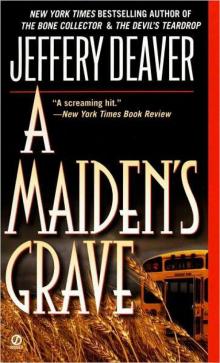 A Maiden's Grave
A Maiden's Grave Trouble in Mind: The Collected Stories - 3
Trouble in Mind: The Collected Stories - 3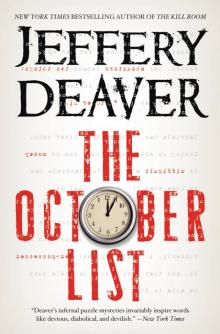 The October List
The October List The Deliveryman
The Deliveryman Garden of Beasts
Garden of Beasts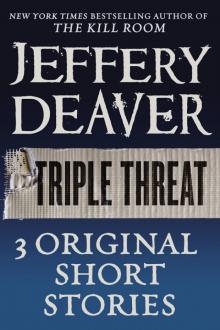 Triple Threat
Triple Threat The Broken Window
The Broken Window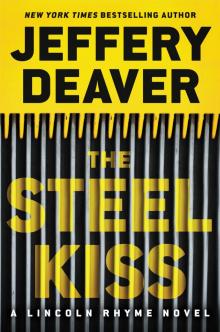 The Steel Kiss
The Steel Kiss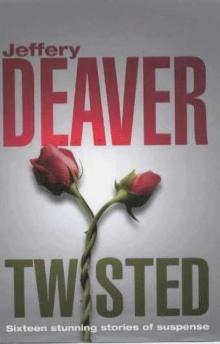 Twisted: The Collected Stories - 1
Twisted: The Collected Stories - 1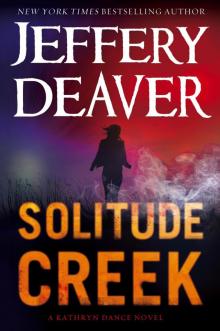 Solitude Creek
Solitude Creek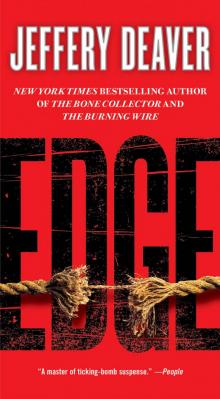 Edge
Edge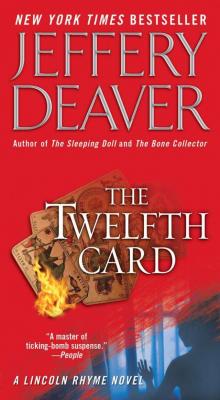 The Twelfth Card
The Twelfth Card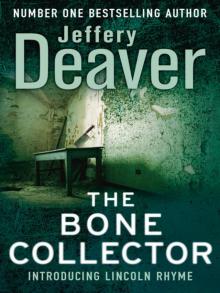 The Bone Collector
The Bone Collector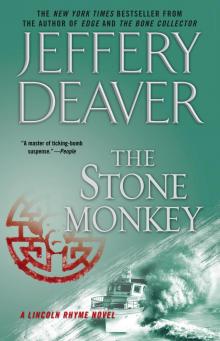 The Stone Monkey
The Stone Monkey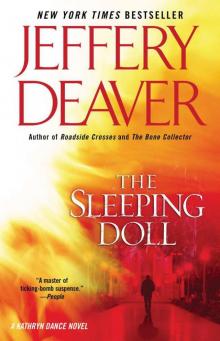 The Sleeping Doll
The Sleeping Doll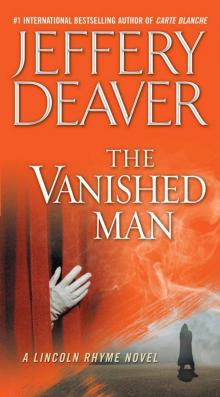 The Vanished Man
The Vanished Man The Kill Room
The Kill Room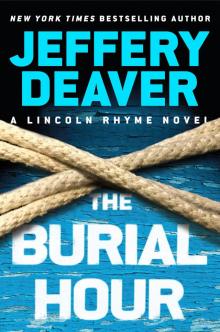 The Burial Hour
The Burial Hour An Acceptable Sacrifice
An Acceptable Sacrifice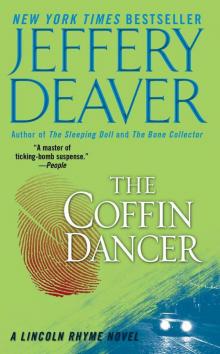 The Coffin Dancer
The Coffin Dancer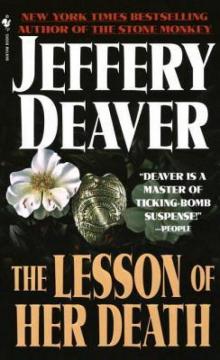 The Lesson of Her Death
The Lesson of Her Death The Empty Chair
The Empty Chair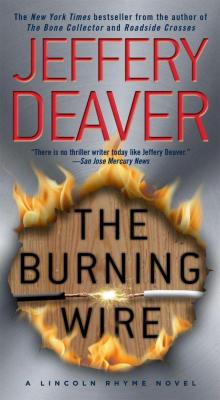 The Burning Wire
The Burning Wire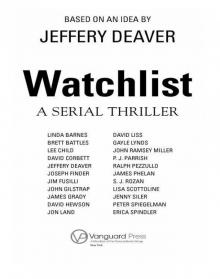 Watchlist
Watchlist Captivated
Captivated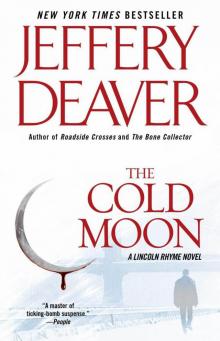 The Cold Moon
The Cold Moon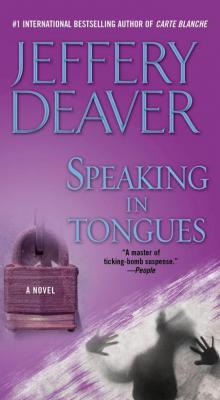 Speaking in Tongues
Speaking in Tongues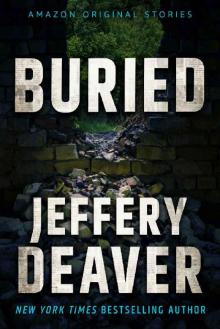 Buried (Hush collection)
Buried (Hush collection)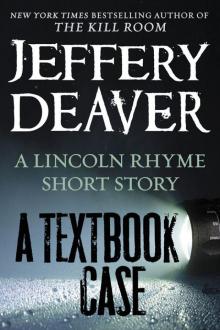 A Textbook Case
A Textbook Case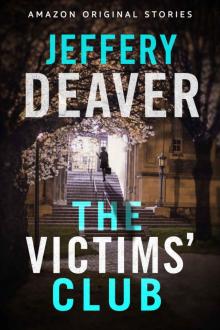 The Victims' Club
The Victims' Club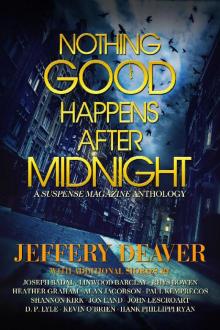 Nothing Good Happens After Midnight: A Suspense Magazine Anthology
Nothing Good Happens After Midnight: A Suspense Magazine Anthology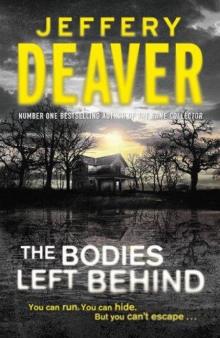 The Bodies Left Behind
The Bodies Left Behind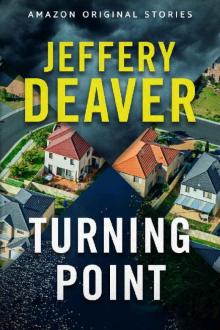 Turning Point
Turning Point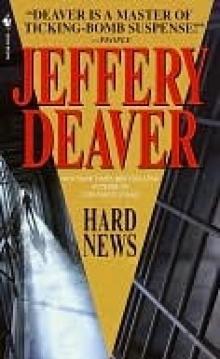 Hard News
Hard News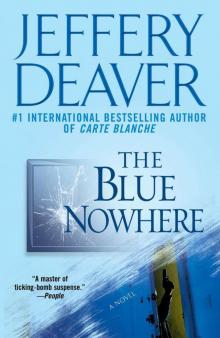 The Blue Nowhere
The Blue Nowhere The Second Hostage
The Second Hostage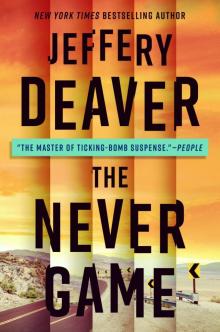 The Never Game
The Never Game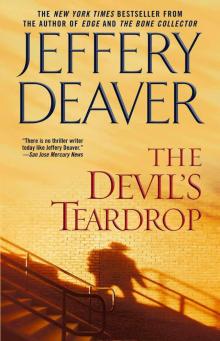 The Devil's Teardrop
The Devil's Teardrop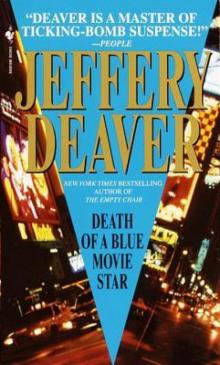 Death of a Blue Movie Star
Death of a Blue Movie Star The Skin Collector
The Skin Collector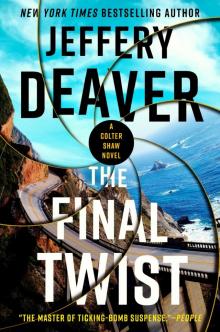 The Final Twist
The Final Twist Surprise Ending
Surprise Ending Twisted: The Collected Stories
Twisted: The Collected Stories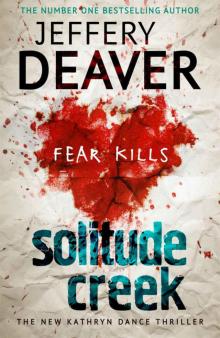 Solitude Creek: Kathryn Dance Book 4
Solitude Creek: Kathryn Dance Book 4 Twisted: The Collected Short Stories of Jeffery Deaver
Twisted: The Collected Short Stories of Jeffery Deaver Rhymes With Prey
Rhymes With Prey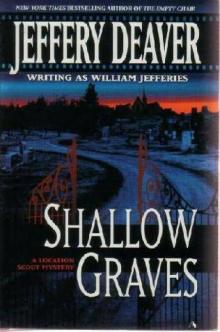 Shallow Graves
Shallow Graves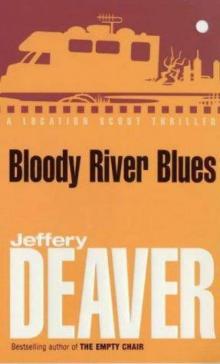 Bloody River Blues
Bloody River Blues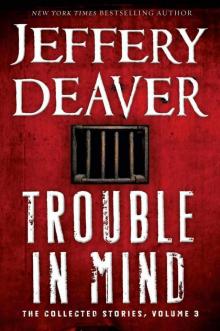 Trouble in Mind: The Collected Stories, Volume 3
Trouble in Mind: The Collected Stories, Volume 3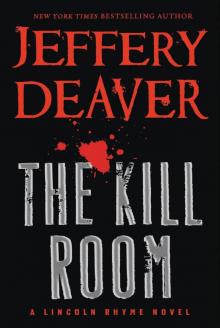 Lincoln Rhyme 10 - The Kill Room
Lincoln Rhyme 10 - The Kill Room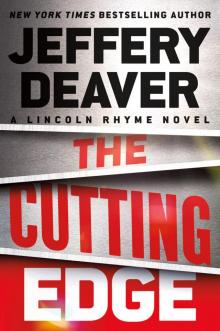 The Cutting Edge
The Cutting Edge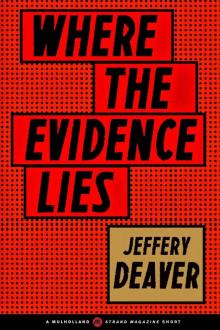 Where the Evidence Lies
Where the Evidence Lies Hell's Kitchen
Hell's Kitchen Twisted
Twisted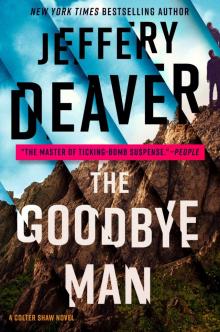 The Goodbye Man
The Goodbye Man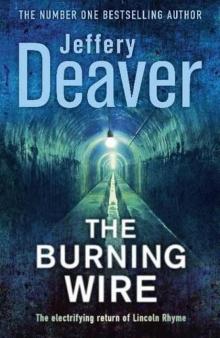 The burning wire lr-9
The burning wire lr-9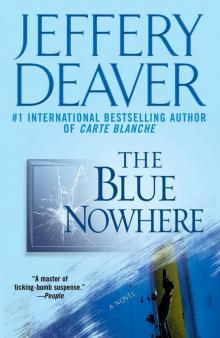 The Blue Nowhere: A Novel
The Blue Nowhere: A Novel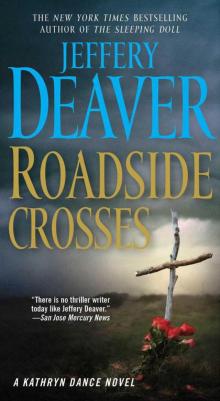 Roadside Crosses: A Kathryn Dance Novel
Roadside Crosses: A Kathryn Dance Novel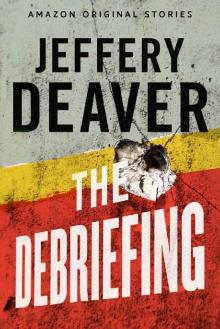 The Debriefing
The Debriefing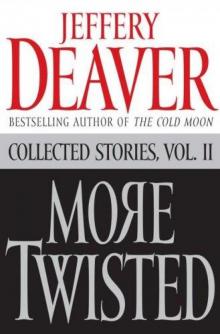 More Twisted: Collected Stories, Vol. II
More Twisted: Collected Stories, Vol. II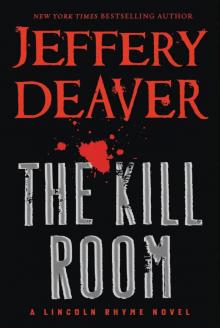 The Kill Room lr-10
The Kill Room lr-10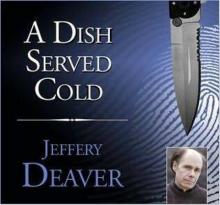 A Dish Served Cold
A Dish Served Cold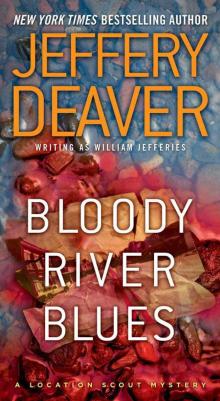 Bloody River Blues: A Location Scout Mystery
Bloody River Blues: A Location Scout Mystery The Bodies Left Behind: A Novel
The Bodies Left Behind: A Novel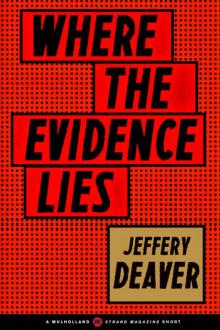 Where the Evidence Lies (A Mulholland / Strand Magazine Short)
Where the Evidence Lies (A Mulholland / Strand Magazine Short)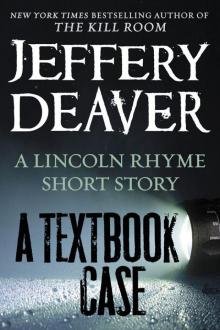 A Textbook Case (lincoln rhyme)
A Textbook Case (lincoln rhyme) Copycat
Copycat The Chopin Manuscript: A Serial Thriller
The Chopin Manuscript: A Serial Thriller Carte Blanche
Carte Blanche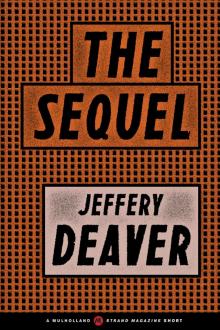 The Sequel
The Sequel